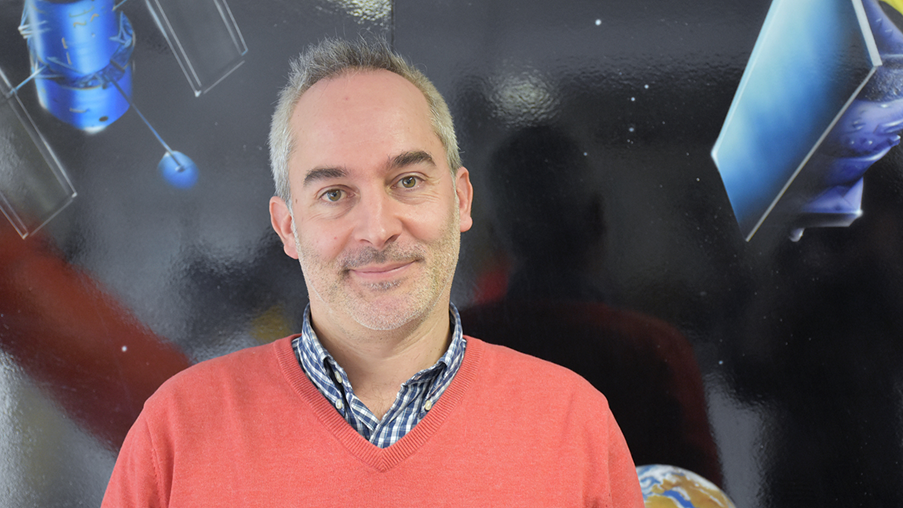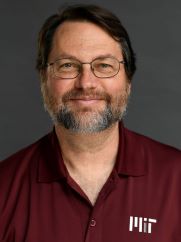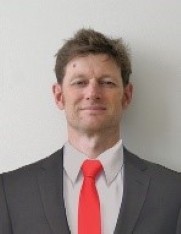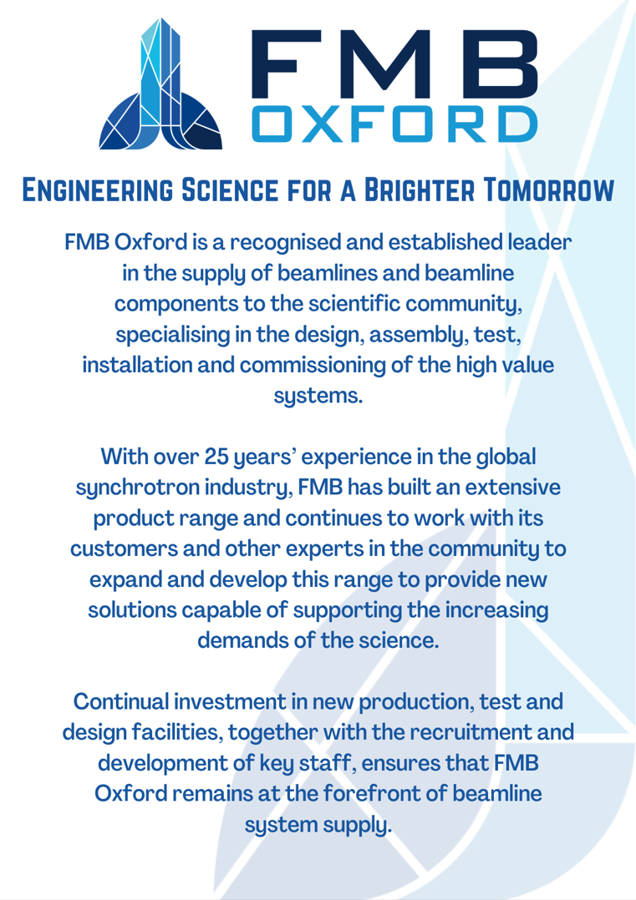Project Description
Special Interest Group Meeting: Precision Motion Systems & Control
15th – 16th November 2022
Special Interest Group Meeting: Precision Motion Systems & Control
Brabanthallen’s-Hertogenbosch, The Netherlands, NL
15th – 16th November 2022
In conjunction with the Precision Fair, we are delighted to bring together our second Special Interest Group meeting on Precision Motion Systems & Control.
Precision motion systems and their control are key elements for precision engineering, both for manufacturing applications as well as for measuring instruments. From one-dimensional systems to complex multi-axis machines, components for linear and angular guidance, actuation, measurement and control of motion are needed for precision positioning tasks.
Increasing demands on the throughput of manufacturing systems and measuring instruments lead to the development of motion systems with higher dynamics and corresponding challenges for position control. As a consequence, the research on and the development of advanced precision motion components, systems and their control are focus areas for industry and academia.
The second euspen Special Interest Group (SIG) on Precision Motion Systems & Control meeting will bring together researchers and practitioners from academia, industry and government agencies to discuss state-of-the-art practice, and key research and development in the area of precision engineering associated with Precision Motion Systems & Control. The meeting includes keynote presentations, oral sessions, posters and training seminars covering the newest developments and research.
This event is being held in conjunction with the Precision Fair allowing our delegates the opportunity to visit this tradeshow of over 300 exhibiting organisations. 
The intensive on-going work in this area led us to bring together this internationally-coordinated meeting and we are seeking papers in the following categories, which are given for orientation, however, possible contributions are not limited to these:
- Precision guide components and systems
- Linear and angular actuators
- Linear and angular position measurement systems
- Motion controllers and drive amplifiers
- New approaches in control algorithms
- Multi-axis positioning systems
- High dynamic positioning systems
- Vibration isolation and active damping systems
- Modelling and analysis of high performance mechatronics designs
- System identification, testing and trouble-shooting
The local hosts and organizing committee for the Special Interest Group meeting on Precision Motion Systems & Control are :- Prof. Andreas Archenti from KTH, SE; Dick Laro, MI-Partners, NL; Dr. Jens Flügge from PTB, DE; Prof. José Yagüe-Fabra, University of Zaragoza, ES; Markus Hauf from Carl Zeiss, DE and Dr. Theo Ruijl, MI-Partners, NL
Key Dates:
2nd September 2022
Online abstract submission extended deadline
15th September 2022
Notification of Presentation Award (Oral/Poster)
19th September 2022
Programme available online
Registration Fees
- €195 +VAT – euspen student members*
- €395 +VAT – euspen members
- €495 +VAT – Non-euspen members
- €595 +VAT – Exhibitor (table top)
- €45 +VAT – Networking Dinner (Only applicable for Student Members)
* Student members fee is not inclusive of the networking dinner.
All speakers and presenters must register for the conference using the appropriate delegate fee.
Registration
We are so excited to be back in-person running our first Precision Motion Systems & Control meeting since the pandemic and look forward to welcoming you to The Netherlands. Please register using the appropriate registration form.
Select Registration Form A if any of the following applies:-
- You are based within the UK or Europe
- You are a private individual or organisation/business
- You are representing a European company that is not VAT/IVA registered
- This form will apply The Netherlands VAT rate (21%)
Select Registration Form B if any of the following applies:-
- You are representing a business/organisation outside Europe
- This form does not apply VAT. This is in accordance with VAT exempt rules.
Submit an abstract for Precision Motion Systems & Control 2022
We are delighted to bring together leading expertise globally to an open forum for
focused presentations and discussions on Precision Motion Systems & Control
Announcement & Call for Abstracts
Come and join your international peers and maintain a leading edge on technology, customers, partners and suppliers. Access the greatest minds in Precision Motion Systems & Control, share knowledge and information and stimulate debates.
Themes:-
- Precision guide components and systems
- Linear and angular actuators
- Linear and angular position measurement systems
- Motion controllers and drive amplifiers
- New approaches in control algorithms
- Multi-axis positioning systems
- High dynamic positioning systems
- Vibration isolation and active damping systems
- Modelling and analysis of high performance mechatronics designs
- System identification, testing and trouble-shooting
Submission of abstracts
Abstracts are expected to describe original work, previously unpublished and should indicate new and significant advances and their importance. Short abstracts should be a minimum of two A4 pages in length and should be submitted online using the ‘abstract submissions’ button above.
Following a review of submitted abstracts, authors will be notified of acceptance of presentation mode (poster/oral).
The invitation to submit an abstract does not constitute an offer to pay travel, accommodation or registration costs associated with the conference. Similarly, no speaker fee is paid to successful participants. All speakers must register for the conference and transfer registration fee. In specific cases the organising committee reserves the right to deviate from the standard procedure.
Submission deadline: 19th August 2022
Keynotes and State-of-the-arts

Prof. Christophe Collette
University of Liège, BE
Active isolation platforms for scientific instruments
Scientific instruments are known to be extremely precise and demanding in terms of disturbance rejection. Stringent requirements on new instruments often require mounting sensitive parts on multi-degree-of freedom active isolation platforms. However, after several decades of research and development, converting performance objectives into efficient mechatronic designs remains an art due to non-trivial factors such as non-linearities, residual couplings or subtle control-structure interactions. Most of the time, new objectives induce new design trade-offs, imposing a specific dedicated design.
This presentation will cover several recent prototypes of active vibration isolation platforms and give some insight about the design methodology and technical choice made to reach a high level of performance.
Biography
Christophe Collette received a M.Sc. in physics engineering from the University of Liège in 2001 and Ph.D. degree in mechatronics engineering from the Université Libre de Bruxelles in 2007. He is currently full professor at University of Liège, and director of the Precision Mechatronics Laboratory. His main research interests include the active and passive control of vibration, and large instruments dedicated to experimental physics.

Prof. Dave Trumper
MIT, US
Experiences and perspectives in precision mechatronics
This presentation will focus on an overview of the author’s precision mechatronic design projects, with an emphasis on the key challenges faced and lessons learned. Central to the presentation is the role of physical insight in guiding novel design approaches and in solving problems along the way. The presented projects include such topics as:
– precision magnetic suspensions
– electrostatic suspensions for reticle handoff
– magnetically levitated bearingless blood pumps
– highly efficient actuation and control of pumps for human organ tissues on chips
– novel levitation linear motors
– atomic force microscope probes and stages
– beam steering mirrors for precision pointing
– fast tool servos for diamond turning
– magnetically levitated broom handle production and levitation of flexible elements
The presentation will be structured to provide an overview of many projects and to allow significant time for questions and discussion.
Biography
David L. Trumper joined the MIT Department of Mechanical Engineering in August 1993, and holds the rank of Professor. He received the B.S., M.S., and Ph.D. degrees from MIT in Electrical Engineering and Computer Science, in 1980, 1984, and 1990, respectively. Professor Trumper’s research centers on the design of precision mechatronic systems, in topics including precision motion control, high-performance manufacturing equipment, novel measurement instruments, biomedical and bioinstrumentation devices, and high-precision magnetic suspensions and bearings. He is a member of the IEEE, ASME, and ASPE (past-President).

Brad Pedersen
OMRON, Neuhausen, CH
Process & IO syncronization for motion control
As demands for increased precision in motion control systems, such as those for semiconductor fabrication and test, combine with the need for increased throughput, the requirements for tightly synchronizing inputs and outputs to motion are increasing. This applies to both the I/O used for motor control as well as the digital I/O accessed “on the fly”, during motion. Precision controllers are providing increasingly sophisticated hardware solutions to these synchronization issues, controlling I/O transport timing and coupling digital I/O to measured position values much more tightly than software-only based solutions can do. Motion system designers are taking advantage of these solutions to increase bandwidth and achieve higher speeds and accuracies and to do operations that formerly required a stop-and-settle period during motion.
This presentation will cover the implementation of ASIC/FPGA based I/O techniques combined with RTOS based motion control to provided very tight coupling between I/O events and control tasks and show how an open implementation of this concept helps solve the I/O synchronization problems faced by today’s high-precision and high-bandwidth applications.
Biography
Brad Pedersen has been working with the PMAC motion controller since 1992. Since its inception, the PMAC has been implemented in some of the highest precision and most dynamically demanding applications in the world. It has also been implemented in many seemingly mundane applications where its features have often transformed the application and expanded industry expectations. Brad has been involved in the design and implementation of 3 generations of the PMAC controller and in many industry-leading machines around the world. His focus has been to find or create solutions with the scientists and machine builders and solve their machine performance needs.

Peter J. de Groot
Zygo Corporation, US
The turbulent history of interferometric methods of precision positioning
Since the earliest developments 150 years ago, advances in light sources, optics, and data processing have firmly established interferometry as an indispensable tool for measurement of distance, displacement, and angle. While it can be sensibly argued that ever-increasing demands on precision have driven advances in interferometric positioning, here we describe the current state of the art with a different driving force in mind: the presence of air in the beam paths.
Free-space, laser-based Interferometers have evolved from a simple Michelson geometry with fringe counting to complex, multi-axis instruments that have sub-nanometer noise levels for monitoring stage motions of several meters per second. These systems readily satisfy the Abbe principle, are directly traceable to the unit of length, and when placed in a vacuum, have unparalleled performance. However, in more common applications where the measurement beams pass through the atmosphere, refractive index variations and turbulence are dominant sources of uncertainty.
An alternative to line-of-sight interferometers is optical encoders that work together with diffraction gratings to monitor both in-plane and out-of-plane motions of stages. Encoders have the enchanting property of much shorter beam paths through air than free-space systems—a practical necessity for modern high-end semiconductor photolithography machines. Adapting multi-axis encoder technology to the performance demands of photolithography leverages the high-speed electronics and low noise characteristic of heterodyne free-space interferometry in new geometries.
A third approach considered here is multi-axis precision positioning for short-range measurements using multiplexed fiber optic interferometry. An example system includes up to 64 passive sensors operated from a common, multi-wavelength source/detection system. The noise performance is 0.02 nm Hz-1/2 over a 3.5mm ± 0.6mm measurement range. These levels of precision once again test the limits of what can be accomplished in the presence of air. In this instance, the solution is to dedicate one or more measurement channels to the task of determining the refractive index of the local atmosphere using stable etalons of traceable, fixed length.
Biography
Peter de Groot invents and develops optical metrology solutions for Zygo Corporation in Middlefield, Connecticut. In addition to instrument products and R&D management, his professional contributions include 200 technical papers, tutorials, and book chapters in physics, optical testing, surface structure analysis, length measurement, international metrology standards. He is an inventor for 140 US patents and is a multiple award winner for innovation. Peter is an active member of the optics and engineering communities as a contributor, conference organizer and educator, and is a Fellow of SPIE, Optica, the Institute of Physics, and the International Academy of Engineering Technology.
Exhibitors
For more information, visit www.fmb-oxford.com
HUBER has a long history of successfully developing standard and/or customized high-precision products for X-ray and neutron scattering investigations. The company is designing and manufacturing various micro-and nano-positioning systems for laboratories, synchrotron and neutron facilities, ranging from one axis units to highly complex customized multi-axes equipment. The actual existent large portfolio can be adapted to fulfil various requirements coming from applications including vacuum, radiation and magnetic extreme environments.
For more information, visit www.xhuber.de




